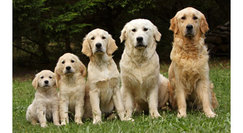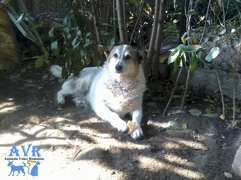|
Obesity is a disease which is defined by an excess of body fat. Dogs that are over nourished, lack the ability to exercise, or that have a tendency to retain weight are the most at risk for becoming obese. Obesity can result in serious adverse health effects, such as reducing the lifespan, even if your dog is only moderately obese. Multiple areas of the body are affected by excess body fat, including the bones and joints, the digestive organs, and the organs responsible for breathing capacity.
Obesity is common in dogs of all ages, but it usually occurs in middle-aged dogs, and generally in those that are between the ages of 5 and 10. Neutered and indoor dogs also tend to have a higher risk of becoming obese. Canine degenerative myelopathy, also known as chronic degenerative radiculomyelopathy, is an incurable, progressive disease of the canine spinal cord that is similar in many ways to amyotrophic lateral sclerosis (ALS). Onset is typically after the age of 7 years and it is seen most frequently in the German shepherd dog, Pembroke Welsh corgi, and boxer dog, though the disorder is strongly associated with a gene mutation in SOD1 (Superoxide dismutase [Cu-Zn] also known as superoxide dismutase 1 or SOD1 is an enzyme that in humans is encoded by the SOD1 gene, located on chromosome 21. SOD1 is one of three human superoxide dismutases. It is implicated in apoptosis and amyotrophic lateral sclerosis.) that has been found in 43 breeds as of 2008, including the wire fox terrier, Chesapeake Bay retriever, Rhodesian ridgeback, and Cardigan Welsh corgi. Progressive weakness and incoordination of the rear limbs are often the first signs seen in affected dogs, with progression over time to complete paralysis. Myelin is an insulating sheath around neurons in the spinal cord. One proposed cause of degenerative myelopathy is that the immune system attacks this sheath, breaking it down. This results in a loss of communication between nerves in lower body of the animal and the brain.
A dog’s ability to move around and perform its daily activities depends on the ability of the brain, spine, nerves and muscles to coordinate in assembly. This complex communication system involves nerves in the brain sending messages about the outer environment to the body, and the body sending messages to the brain regarding what it is actually experiencing in the environment. These messages are transmitted through nerves in the spinal cord, which is embedded in the vertebral, or spinal, column. Together, the nerves in the brain and spinal cord make up the body's central nervous system. A trauma to any part of the nerve pathway can result in miscommunication or complete lack of communication to the brain or body, and an inability to coordinate the body's movements.
 First I will tell you the stages of a dog and then we will discuss all of it with goods and bads so you can decide if you will adopt a puppy, an adult or a senior dog. Stage 1: Neonatal - 0-2 weeks Stage 2: Transitional - 2-4 weeks Stage 3: Social - 3-12 weeks Stage 4: Hierarchical - 3-6 months Stage 5: Teenage - 6-18 months Stage 6: Adult - 2-3 years Stage 7: Senior - 5-10 years  Aschiuta , male, neuter, age: 18 Aschiuta , male, neuter, age: 18 Canine cognitive dysfunction syndrome is similar to human involutive psychosis similar to Alzheimer. The treatment with acetylcholine (ACH) failed because of the irreversible changes on the brain; however, some specialists recommend lecithin to reduce the risks of CCDS. CCDS is characterized by general decline of memory, learning, attention and perception with decreasing the capacity to adapt at different situations. In some cases is mention painful crisis, deafness or decreasing the visual ability (partial blindness) that lead to increasing irritability, anxiety, fear and at the end makes the dog become aggressive, even though he never was aggressive. |
ArchivesCategories
All
|

